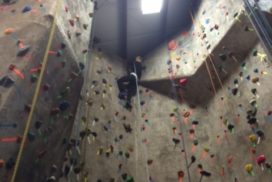MENISCUS REPAIR
What is the Meniscus?
The Meniscus is: The piece of cartilage that provides a cushion between your femur (thighbone) and tibia (shinbone). There are two menisci in each knee joint.
The meniscus can be injured during activities that cause direct contact or pressure from a forced twist or rotation. Should an injury occur, it is usually categorized as a partial tear or a complete tear. If you have a meniscus injury, whether or not your meniscus is removed or repaired depends on several factors including your age, the type of tear, and the location of the tear. Both surgery options are considered ambulatory ones, which means you will be in and out of the hospital in the same day.
What are the Symptoms of a Meniscus Tear?
Symptoms of a meniscus tear include:
- Knee pain
- Swelling
- Stiffness in and around the knee
- Difficult walking
- Limited range of motion for injured knee
Some common causes of meniscus tears include:
- Activities that cause direct contact with the knee
- A forced twist or rotation
- A sudden pivot or turn
- Deep squatting
- Heavy lifting
What are the Treatments for a Meniscus Tear?
Surgical Treatments
Will my meniscus be partially removed or repaired?
This depends on several factors including your age, the type of tear, and the location of the tear. If the surgeon feels your tear can be repaired, then she will repair it, otherwise, the problematic area will be debrided and removed. She will take the least amount of meniscus as possible in order to leave the most cushion to protect the cartilage. If your meniscus is repaired, the surgeon will sew the tear together. The repaired meniscus is very fragile the first few weeks after surgery, so you will have a different recovery plan.
How long will I stay in the hospital?
This surgery is done as ambulatory surgery, meaning you will go home the same day of surgery.
What are the possible risks and complications of surgery?
As with any surgery there is a low risk of blood clot, nerve damage, and postoperative infection. Specific risks and complications include but aren’t limited to re-injury, post-op stiffness, and arthritis.
When can I drive?
You may not drive while taking pain medication. Additionally, if it is your right knee, you will not be able to drive for approximately 2-6 weeks after surgery, depending if the meniscus was repaired or removed.
When can I resume jogging and more sport specific activities?
You will not resume jogging until cleared by your physician. This typically is around 3 months after surgery, depending on quadriceps strength. You will be allowed to begin biking without resistance once you have adequate range of motion and will begin this with your physical therapist. Once adequate quad strength is demonstrated you will transition to the Elliptical machine, running is the next step, and then you may proceed to more sport specific activities. Please see Your Surgery and Physical Therapy for more information on this condition.
What is the procedure?
This procedure consists of several small incisions around the knee to utilize a camera to visualize the inside of the knee. The surgeon will then debride the problem area or remove the loose body.
How long will I stay in the hospital?
This surgery is typically done as ambulatory surgery, meaning you will go home the same day of surgery.
What are the possible risks and complications of surgery?
As with any surgery there is a risk of DVT, nerve damage, and postoperative infection. Specific risks and complications include but aren’t limited to persistence of symptoms, post-op stiffness, and arthritis.
When can I drive?
You may not drive while taking pain medication. In addition, if it is your right knee that had surgery, you will not be able to drive for approximately 2-4 weeks after surgery.
When will I be back to all normal activities?
This typically is around 2-3 months after surgery. You will be allowed to begin biking without resistance once you have adequate range of motion and will begin this with your physical therapist, typically 2-3 weeks after surgery. Once adequate quad strength is demonstrated you will transition to the Elliptical, then to running, and then to more specific activity if desired. Please see Your Surgery and Physical Therapy for more information on this condition.






